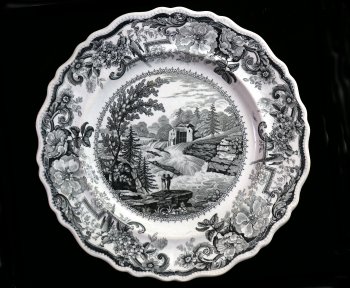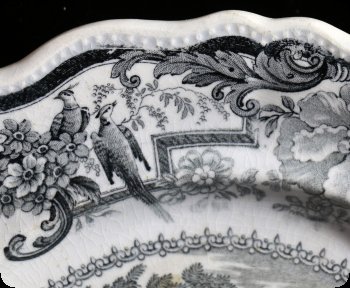Artistry, Labor Strife, and Cutthroat Competition
The transfer plate process allowed producers of Staffordshire earthenware plates to produce ever-more detailed works of art, but that was not enough to stay ahead of the competition. The business was rife with labor strife, cutthroat competition, and theft of artwork and designs. This plate was made by the pottery of brothers James and Ralph Clews, located in Staffordshire, England. Opened at about the time Illinois became a state, the Clews continued in operation until 1835. The Clews pottery was a major exporter to the United States, and its ceramics were a familiar sight in Illinois homes.
The Clews brothers were not above stealing the patterns of their rivals, and they routinely borrowed artwork from outside sources. They also created additional turmoil by underpaying their workers and engaging in brutal competition with other English pottery exporters. This plate was made for the American trade and features an image of the Hudson River in New York. An etching by John Hill, after a watercolor by Irish artist William Guy Wall, forms the basis for the center of the plate. The Clews brothers altered it to fit the shape of the plate and replaced a lone man in the foreground of the original with a couple enjoying the view of Baker’s Falls on the Hudson River.






